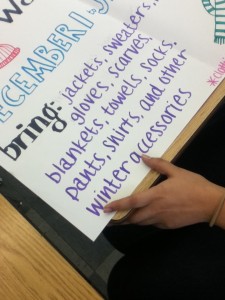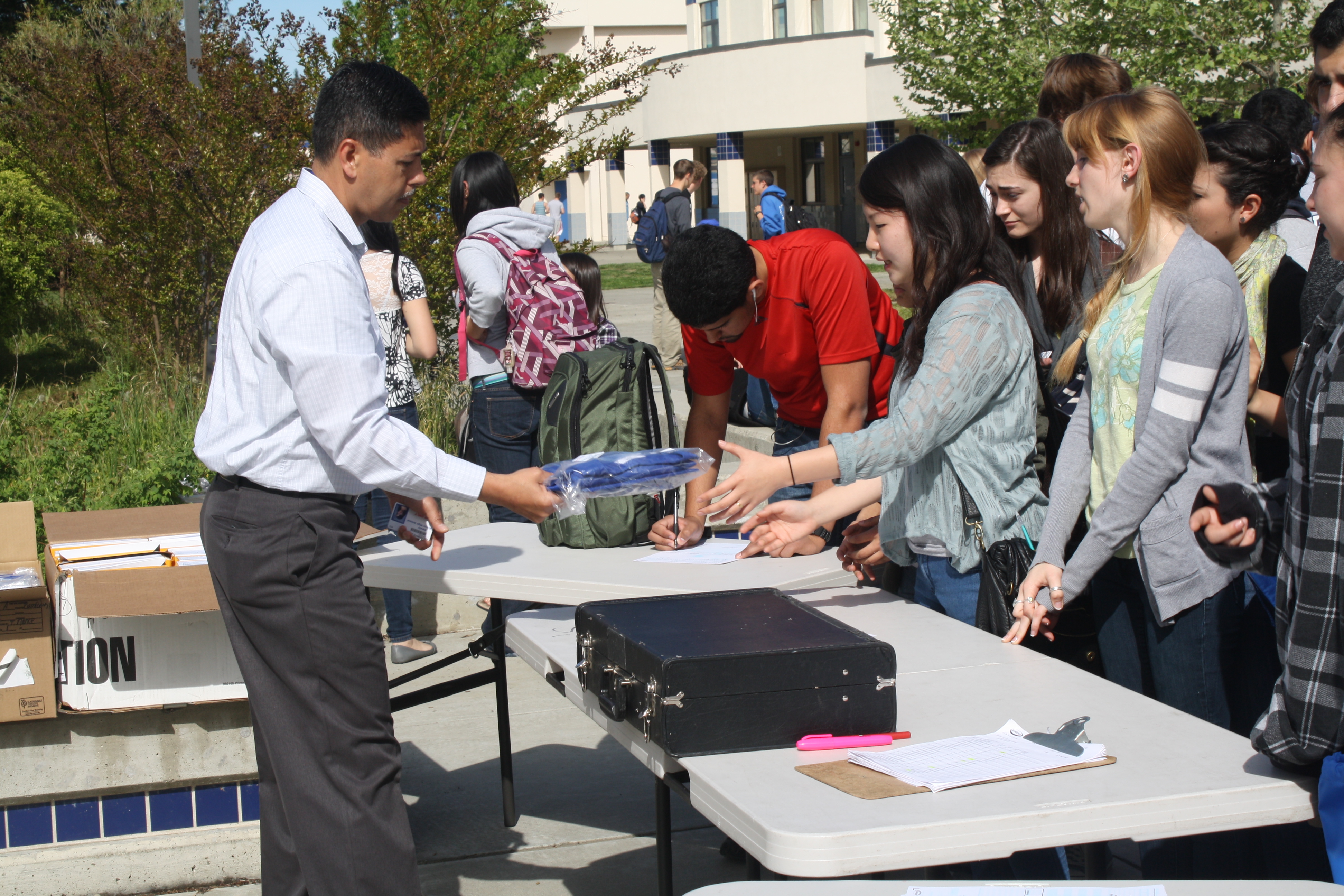Feminism Club works to overcome negative perception

By Isabel Montesanto,
Bluedevilhub.com Staff–
It’s Wednesday and lunchtime at Davis High. In room O-1 some thirty-odd students, mostly girls, sit in a circle of desks hastily rearranged at the beginning of the lunch period.
Over shared desserts, they chat animatedly, planning details for their club’s upcoming warm clothing drive. As the discussion concludes, the students pull out paper and markers and begin drafting posters. “Hosted by the DHS Feminism Club,” one poster reads.
The Feminism Club website defines feminism as “the notion that men and women deserve the same rights, opportunities and responsibilities.”
Unfortunately for the club, however, not everybody agrees with this definition.
Television evangelist Pat Robertson was once quoted in the New York Times expressing his view about feminism.
“It is about a socialist, anti-family political movement that encourages women to leave their husbands, kill their children, practice witchcraft, destroy capitalism and become lesbians,” Robertson wrote.
Although Robertson’s extreme opinion certainly does not reflect a universal view of feminism, the feminist movement has historically been met with severe criticism and hatred.
Kimberlee Shauman, a sociology professor at UC Davis, believes that feminism continues to be oversimplified and misconstrued by modern society, which makes it difficult for feminists to enact change.
“The perception and the continued misunderstanding of feminism makes change slow because feminists don’t get to just move forward advocating for easily-identified actions,” Shauman said. “Time must be taken to continually define one’s identity as a feminist.”
Feminism Club is certainly experiencing this issue. Club secretary Noelle Averett has encountered derision and misunderstanding from her fellow students about the club, and believes that many students view feminism as a push for female superiority rather than one for equality.
“I think that a lot of people, when they hear the word ‘feminism,’ only really hear the ‘fem’ part,” Averett said. She speculates that word of mouth might be the best–or the only–way to create a more positive school-wide opinion of the club.

Club member sophomore Graciela Serratos echoed Averett’s sentiment. Serratos was brought to a meeting by a friend and was initially very skeptical.
“I didn’t want to go to the club at first because I thought that feminism meant women over men,” she said.
Although Serratos has now embraced the club’s definition of feminism, she believes that the majority of people still think as she once did. In her opinion, the term “feminism” should be changed to “equalism” or something similar to avoid this confusion.
Senior Arden Ambrose-Winters, another club member, observed a similar dynamic. She suggested that the club should raise awareness by making their definition of feminism more publicly available.
Despite the challenges, things are looking up for Feminism Club. Averett was surprised and pleased by the turnout this year, especially with the number of sophomore members.
In fact, the club officers have found it hard to find new discussion topics for each meeting, since most of the members are already very informed on feminist issues.
Co-president Claudia Shebloski mentioned that while she had experienced criticism for the club last year, she has not observed any negativity recently, and believes that “students and teachers both understand that feminism is about equality.”
Shebloski said that a bigger misperception surrounding feminism is that men cannot participate in feminism or in the club, which is untrue. In her view, feminism has benefits for men as well as women.
“We hope that Feminism Club, this year and following years, can encourage more people to participate in feminism, because everyone is welcome,” Shebloski said.
The club meets every other Wednesdays in room O-1. All are invited to attend.



